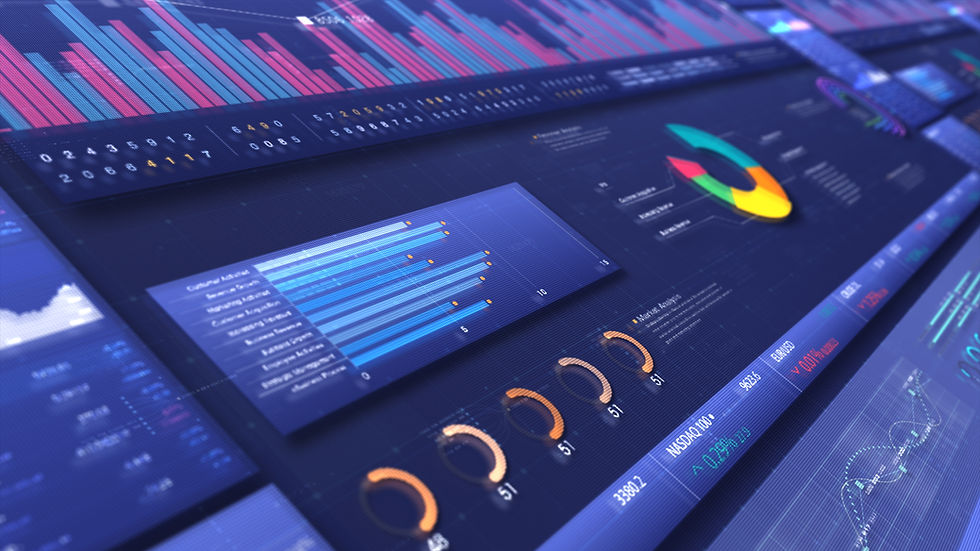AI is Revolutionizing HR—But What About Organizations Stuck in the Past?
- Brew Baritugo

- Mar 21
- 3 min read

AI is redefining how businesses manage people. From AI-enhanced recruitment and predictive analytics to automated performance management, organizations worldwide are investing in tools that optimize efficiency and improve decision-making. A PwC report found that 52% of global HR leaders expect AI to drive major changes in workforce management within the next three years. In the Philippines, companies are already exploring AI-driven hiring platforms, chatbot-enabled employee engagement, and advanced workforce analytics to stay ahead.
Yet, while many organizations are accelerating AI adoption, others remain anchored in outdated systems, rigid processes, and traditional workplace cultures. These businesses face a growing risk of losing talent, slowing productivity, and struggling to compete in an evolving landscape. The challenge isn’t just about technology. Many of these organizations are dealing with deeply embedded workflows, resistance to change, and a lack of digital infrastructure.
A retail organization in Southeast Asia, for example, struggled with talent acquisition because it still relied on manual hiring processes. Walk-in applicants filled out paper forms. Recruitment decisions were made without clear performance data. While competitors used AI-driven talent sourcing, this company’s hiring cycle remained slow and inefficient. The impact was significant—high turnover, prolonged vacancies, and a frustrating candidate experience. By the time they considered AI, they realized their existing structure couldn’t support it. The first step wasn’t automation but transformation.
Organizations hesitant about AI shouldn’t focus on jumping straight into automation. They should focus on readiness.
Building the Right Foundation Before AI
AI is not a shortcut to efficiency. It amplifies what already exists. If an organization’s processes are fragmented, AI will magnify those inefficiencies. Before considering automation, companies must evaluate whether their HR operations are structured enough to integrate technology. This requires investment in three key areas: digitization, process optimization, and a data-driven mindset.
Digitization is the first step. Organizations still using manual records, paper-based workflows, or disconnected HR systems must first move to a digital-first model. Cloud-based HR platforms, centralized employee records, and real-time dashboards provide the necessary infrastructure for AI integration. Without this foundation, AI tools will be limited in their effectiveness.
Process optimization follows. Before AI can enhance decision-making, businesses must ensure that their existing workflows are well-defined and efficient. Inconsistent hiring practices, unclear performance evaluation methods, and fragmented employee engagement initiatives create operational noise that AI cannot solve. Streamlining processes through automation-friendly frameworks prepares organizations for future AI-driven improvements.
A data-driven mindset is crucial. Many organizations operate on gut feel rather than analytics. AI thrives on patterns, trends, and insights, but if a company does not already use data to drive HR decisions, AI adoption will be ineffective. Leaders must establish a culture where HR metrics, employee performance data, and workforce analytics inform strategic decisions.
Scaling AI as the Organization Matures
Once a company has built a solid foundation, AI adoption becomes more effective. Early-stage AI integration can begin with small, targeted solutions. Chatbots can assist with employee inquiries. AI-powered recruitment platforms can improve candidate sourcing. Workforce analytics can help predict attrition risks. These incremental implementations allow organizations to test AI solutions while ensuring alignment with business needs.
As organizations mature in their AI journey, more advanced applications become possible. Personalized learning and development programs can be driven by AI-powered skill assessments. Predictive analytics can anticipate workforce trends, allowing HR teams to act proactively. AI can even support leadership development by analyzing behavioral patterns and recommending tailored coaching strategies.
Organizational culture must evolve alongside technology. Companies that successfully integrate AI into their HR functions invest in continuous learning, adaptability, and change management. Employees at all levels need to understand how AI tools support, rather than replace, human decision-making. Leaders must champion AI adoption by demonstrating its value in creating a more efficient and people-centric workplace.
The Future of HR Isn’t Just AI—It’s Readiness
The AI wave is here, but not every organization is ready to ride it. Businesses that have spent years operating in manual, process-heavy environments will not see immediate results from AI implementation. The real work lies in preparing HR operations, shifting workplace mindsets, and creating a digital ecosystem that allows AI to add value.
AI doesn’t solve broken processes. It makes good ones better. The question isn’t whether organizations should adopt AI—it’s whether they are setting up their teams, processes, and cultures to even benefit from it.



Comments